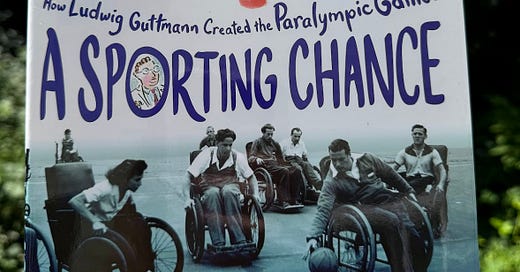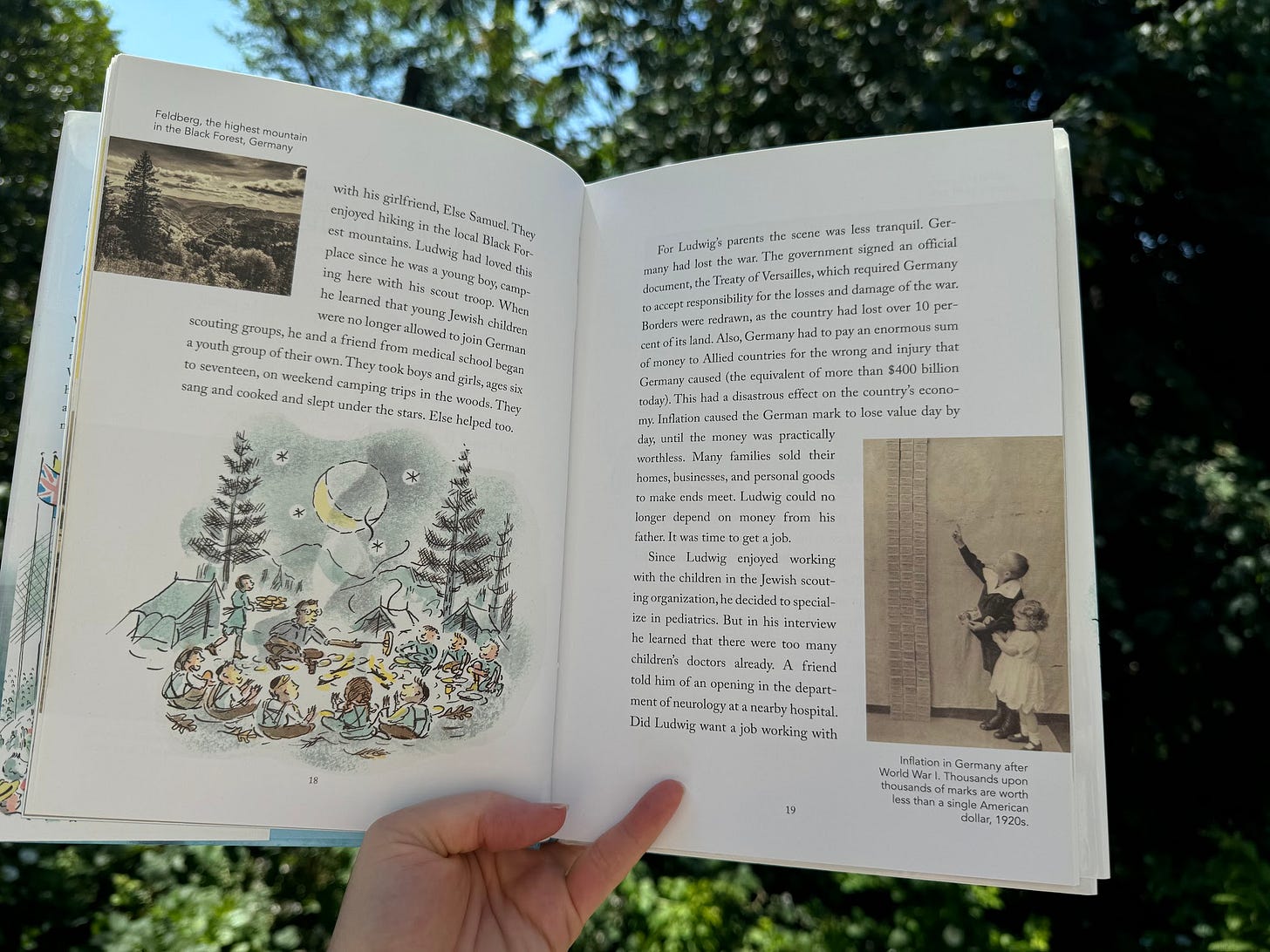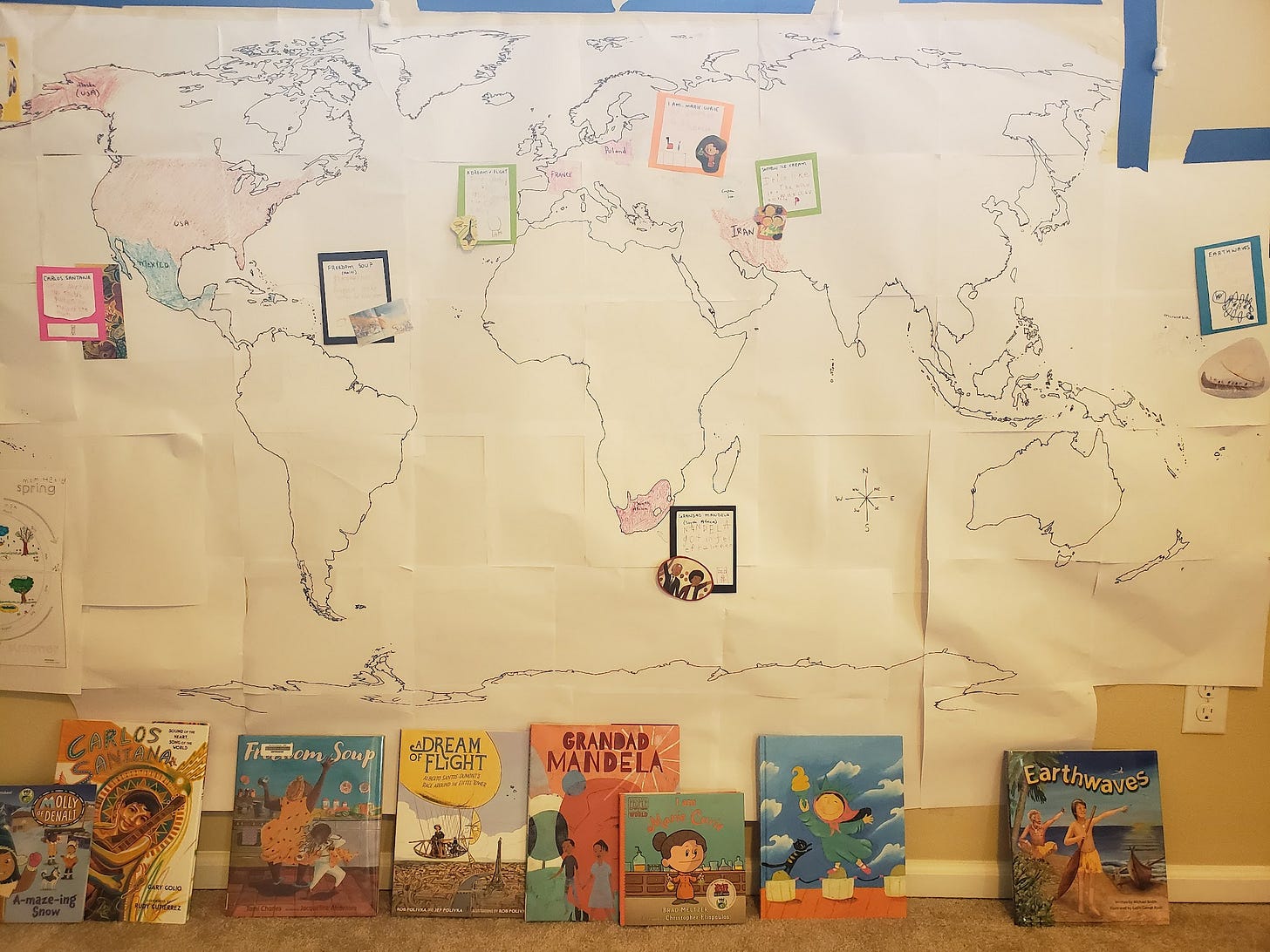The BEST book about the Paralympic Games
Also, I remember watching the opening ceremonies with people from all around the world
A book to read: A SPORTING CHANCE: How Ludwig Guttmann Created the Paralympic Games by Lori Alexander, illustrated by Allan Drummond
The story begins with Ludwig Guttmann, a teenager in Germany. It’s WWI and he’s a medical trainee who couldn’t stomach the sight of blood. (I feel ya, Ludwig!), but by the mid 1920s Guttmann had gotten over his queasiness and was training as a neurosurgeon.
The book covers German hyperinflation and the rise of Nazism. As a Jewish doctor, Ludwig and his young family fled to England just before WWII with the organization The Society for the Protection of Science and Learning.
While treating patients dealing with spinal injuries during and after WWII, Ludwig worked to bring hope back to his patients. He didn’t see them as “incurables,” but as people with hopes and dreams and the capacity to learn new skills. Soon, those hopes and dreams included basketball, archery and table tennis.
Ludwig organized games and competitions at his hospital. Soon, his Stoke Mandeville Games were being played alongside the Olympics.
“The Greek word para- means “alongside” or “in parallel.” Later renamed, the 1960 event in Rome was recorded as the first official Paralympic Games.” —A Sporting Chance
The book is a delightful combination of text, illustrations and primary source material. The final chapter highlights modern athletes like Trischa Zorn, Brian Bell, and Muffy Davis.
A place to explore: A ski cabin somewhere in Sweden
I’ve never traveled to watch the Olympics.
In 2006, the winter Olympics were in Italy, but I was in Norway. If you can’t go to the winter Olympics, Norway is the next best place to be.
Norwegians LOVE their Olympics. I was student-teaching in a high school in Trondheim (a town north of Oslo), and all over the school’s common areas were screens projecting live footage of biathalon races and ski jumping.1
As a student-teacher, I was enrolled at a University in Trondheim2, and one of the activities planned for international students was an overnight ski trip to Sweden.
I’m not sure how I afforded this,3 but I signed up. About 10 or 20 of us loaded into a van and headed toward the mountains. We stopped for spaghetti supplies on the way up to our ski cabin.
I only knew a couple people in the group, but that didn’t matter.
We all spoke different languages, but that didn’t matter.
You don’t need to speak the same language to boil noodles, chop lettuce, or brush butter on garlic bread. With our plates of pasta, we all crowded into the living room and turned on the tiny TV.
The opening ceremonies were on.
As each group of ebullient athletes entered the stadium waving their flag, someone from our international group would shout out a patriotic cheer that only they understood. They’d hold up a fistful of garlic bread or cup of wine in solidarity with their nation, sometimes with tears in their eyes.
Then the rest of us would cheer. We’d cheer for the athletes onstage. More importantly, we’d cheer with our new friend on the couch. They’d get a slap on the back, a toast in a mix of languages, and we’d all learn a few bars of that nation’s anthem. I cannot imagine a better way to watch the opening ceremonies.
I think we all knew we were living in one of those special you’ll-remember-this-forever moments. We kept looking at each other in happy disbelief that we all got to be part of this experience.
Highly recommend.
A lesson to teach: Geography
A SPORTING CHANCE book was part of my WWII book-speed-dating lesson plan. It would also be a great supplement to any WWI, WWII, or disability studies unit plan. However, the upcoming Paris Olympics are happening in the summertime, when I’m more focused on teaching my own children.
I never pass up an opportunity to teach my children geography, and the Olympics are a perfect opportunity. Each time the international games come around, I print off this map from this website. It’s a 64 page map, so putting it together is a bit like a puzzle. You’ll need a bunch of tape, a big space, and a couple hours to put the map together. Here’s what it’ll look like:
The picture above is when I read my kid’s picture books and we colored in the country the book was set in, but during the Olympics, we color in the country of whoever is competing. Fabulous geography lesson :)
Happy reading, teaching and exploring! See y’all next week
One of my friends in Norway is a public school PE teacher, which in Norway means that his students are potential Olympic contenders and he and his students spend a good chunk of their school days on the slopes skiing.
it was a student-teacher exchange situation
Credit cards. That was probably how.






That’s seriously very cool - the books, the map, and the way you teach it! Thank you 🙏
Student teaching in Norway sounds magnificent!